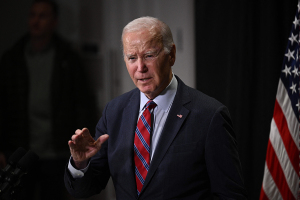Church Staff: Some Observations
In the past quarter of century of church leadership and church consultation, one of the most common and pressing issues I have heard relates to church staff. For example, here are some of the more common questions I receive: After the pastor, what should be the next staff position we add? How much of a church budget should be dedicated to personnel costs? How do lay leaders deal with staff conflict? How do pastors and staff deal with staff conflict? How do we know when a volunteer or a paid staff member should lead a church ministry? What do we do about an under-performing staff person? Should we, or how should we, differentiate pay among staff members?
Current Church Staff Trends in American Congregations
Rather than attempt to answer each of the above questions specifically, I will rather note some trends that are evident in American churches regarding church staff. As will be evident in each of these trends, the diversity in how churches deal with staff is growing each year.
- There are no longer consistent norms for the portion of a church budget that should be dedicated to personnel costs. Each church has a different rationale or contextualized reasons for the inclusion or exclusion of specific paid staff. No longer can someone look at a church budget and offer an normative percentage for personnel costs.
- The responsibilities and names of church staff positions are incredibly diverse. When churches were largely program driven, they would offer call or hire staff according to the program. Thus a music minister was hired for the music program. An educational minister was brought on staff to oversee the educational program. And a youth minister was added for youth programs. Though those positions still exist, program oversight is no longer the primary motivator for adding many staff members.
- The job descriptions of executive pastors are greatly varied. Some executive pastors oversee all staff; some don’t. Some executive pastors share preaching responsibilities; some don’t. Some executive pastors have primarily business administration responsibilities; others have primarily ministry responsibilities. While more and more larger churches are adding executive pastors, the nature of their responsibilities is very diverse.
- Churches still struggle to know how to deal with under-performing church staff. There continues to be a widespread sentiment that it’s not the “Christian thing to do” to dismiss or discipline church staff. Often these under-performing staff members are therefore re-assigned to innocuous and low-accountability positions. However, we are watching a recent trend that shows about four percent of church staff are terminated each year, a number much higher than that of senior pastors (see below).
- The number of forced terminations of senior pastors has stabilized. For the past seven years, about 1.5 percent of senior pastors have lost their jobs each year due to forced terminations. That number is fairly stable.
- Other than the senior pastor and the worship leader, there is little consistency among churches on which staff positions are paid and which are unpaid volunteers. This inconsistency has become even more pronounced the past five years.
The Growing Pattern of Diverse Trends
Though I have noted just six trends, there is a definite pattern of variation in how churches do their staffing. When I first started doing church consultations in the late 1980s, I could bring a template job description for five or six church staff positions. And I could provide metrics that helped church leaders know if the level of paid staffing in their churches was adequate.
That is certainly not the situation today. How churches decide their staffing needs is almost as varied as the number of churches. And maybe the “cookie cutter” approach is not the best way to staff churches today. Maybe churches truly understand their unique communities, congregations, and missional thrust more clearly. Maybe the churches are responding to the unique call of God on their congregations in the way they decide staff. If so, this trend of inconsistency may not be such a bad thing after all.




























